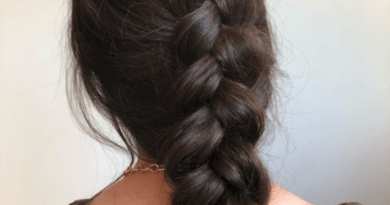Trichotillomania: What Is It?
1.Trichotillomania has a number of symptoms, including:
Pulling one’s hair out, usually one hair at a time, from any place on the body, but most often from one’s scalp, eyebrows, or eyelashes. Hair pullers experience bald spots, and often, a great deal of emotional suffering. Most are ashamed and guilty about their behavior and are afraid that others will judge them as mentally ill or using hair pulling to gain attention from others. Many hair pullers withdraw socially, from friends and family, and from work or intimate relationships.
2. Because compulsive hair pulling is such an embarrassing problem, it is difficult to get exact statistics, however:
Trichotillomania, also known as compulsive hair pulling, is disfiguring and emotionally painful. It is estimated that the number of hair pullers in the United States alone, include as many as 3-5% of the US population.
Females are thought to be the greatest sufferers but this may be because it is more common for them to seek out help for the problem.
3. Most suffer in silence and hiding, terribly embarrassed by the disfiguring condition.
There is a terrible inner shame that comes with pulling your own hair out. The shame comes from doing something that appears to be without purpose or crazy. It’s important to note that hair pulling doesn’t hurt the hair puller and, in fact, actually feels good. He or she doesn’t understand why something that’s supposed to hurt feels so great or why they’re literally driven to do it. But I have found that there is actually a great deal of valid purpose behind this seemingly crazy way to spend one’s time.
Another big issue is that hair pulling inserts itself into the middle of the sufferer’s relationships because the hair puller is so ashamed that they begin to either emotionally or physically isolate from others. It also can interfere with their ability to communicate because while they’re having a conversation with you, they may be fighting the constant urge to pull.
4. Compulsive hair pullers typically pull just one hair at a time and may pull for hours a day.
Few hair pullers commonly pull out clumps of their own hair or desire to pull the hair of others’. Years ago, we adopted-out our Australian Terrier, only to learn that we should’ve been grooming her by pro-actively removing the shedding clumps. It was a disappointment to realize that I could’ve been taking better care of my dog but instead I was wrapped up in pulling my own hair out!
5. Many compulsive hair pullers wear hats, wigs, false eyelashes and makeup to cover their missing hair, eyebrows or eyelashes.
Hair pullers want to look their best at all times and may employ various ways to cover up the problem. The risk to covering up is that it gives the sufferer a way to hide the problem which can diminish a hair puller’s motivation to get help or free themselves from the problem.
6. Compulsive hair pullers may experience times of spontaneous relief from the condition, only to have it return again months or years later.
Over the course of my 27 years of hair pulling, I experienced many times of “remission,” some lasting for six or more months. However, the last five years before I stopped pulling, it intensified to hours nearly every day.
7. Trichotillomania is currently medically classified as an Impulse Control Disorder.
It was previously classified as an Obsessive-Compulsive Disorder but this was later retracted. Even today, many doctors still think of it as an OCD and attempt to treat it this way.
8. There currently is no medical cure for Trichotillomania.
Various studies are always being done, but today there is no medication, behavioral, psychological or natural therapy that has consistently proven to provide long term relief from Trichotillomania.
On my own, I was able to go deeply inside myself to discover my core reasons for hair pulling and resolve them which resulted in the wonderful level of long-term freedom that I now experience.
8. Some child and adult hair pullers ingest hair, which can cause a dangerous, intestinal blockage called a “trichobezoar.”
Hair pullers who eat hair must stay aware because they can put their lives at risk. If you eat hair, please have your doctor evaluate you and watch for signs of intestinal distress.

